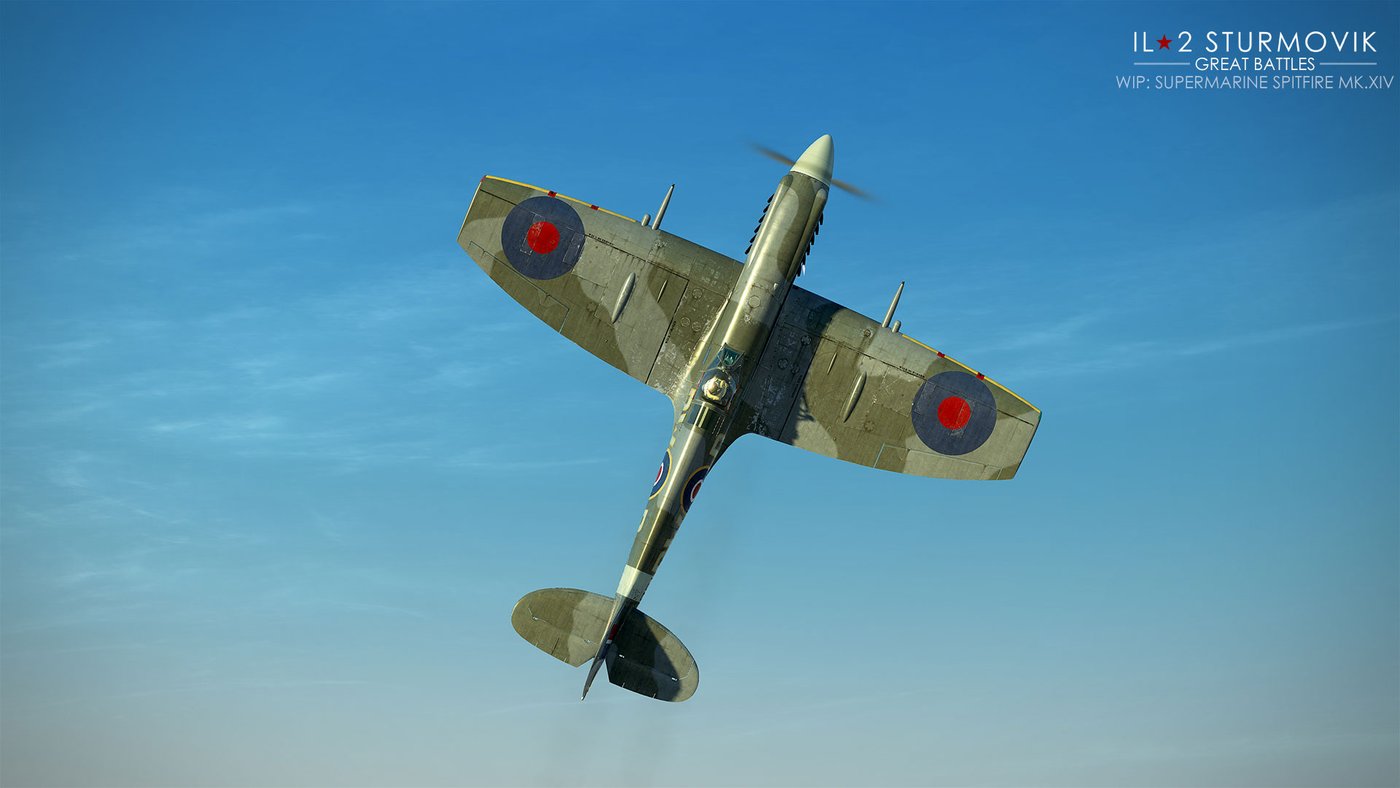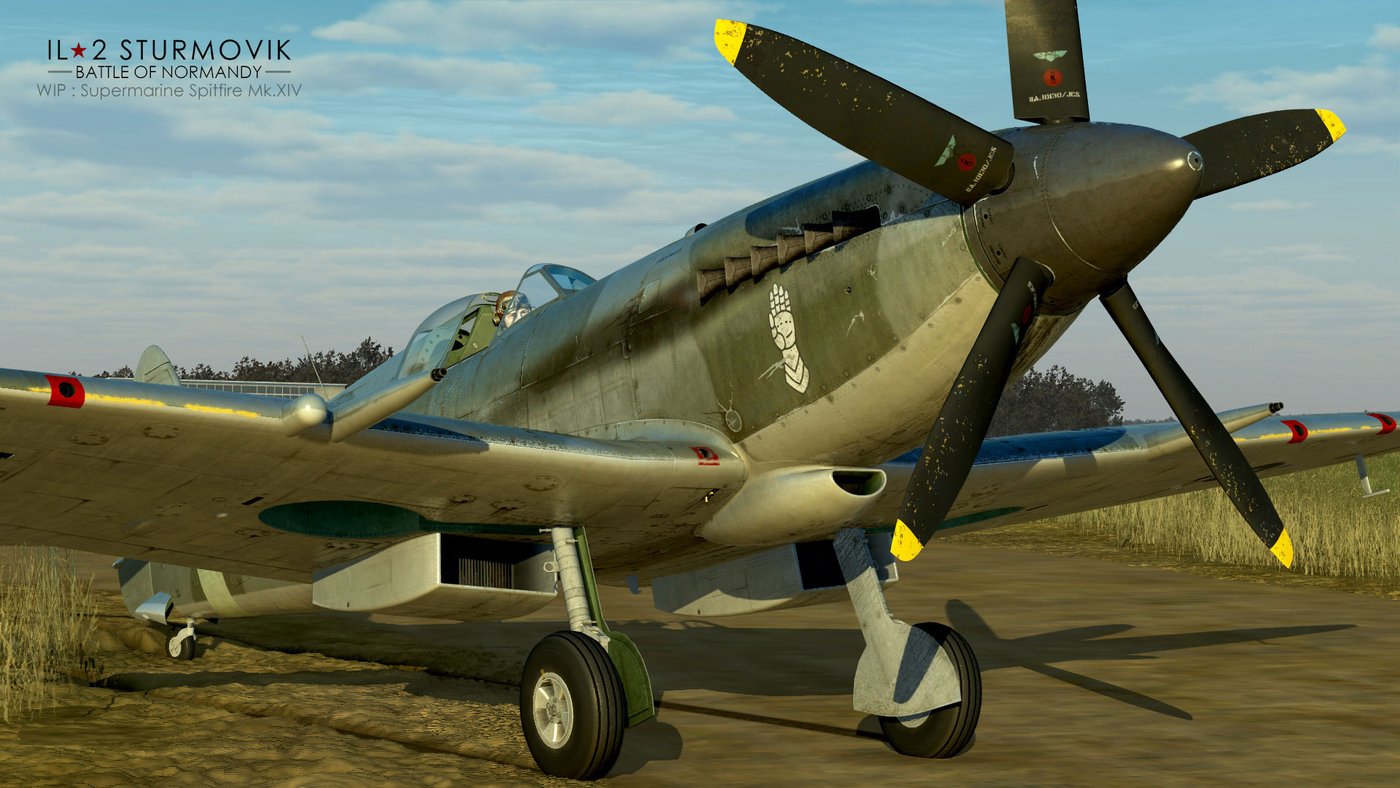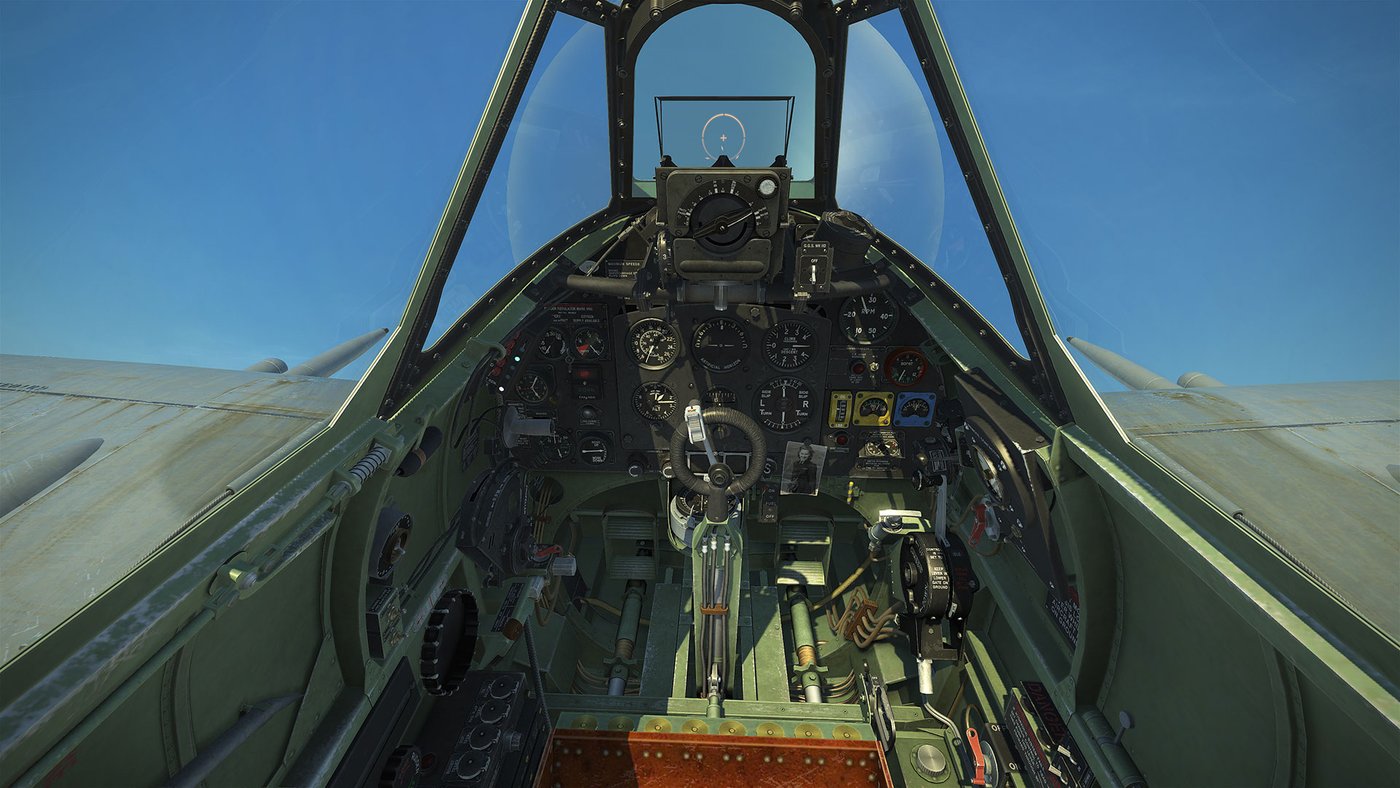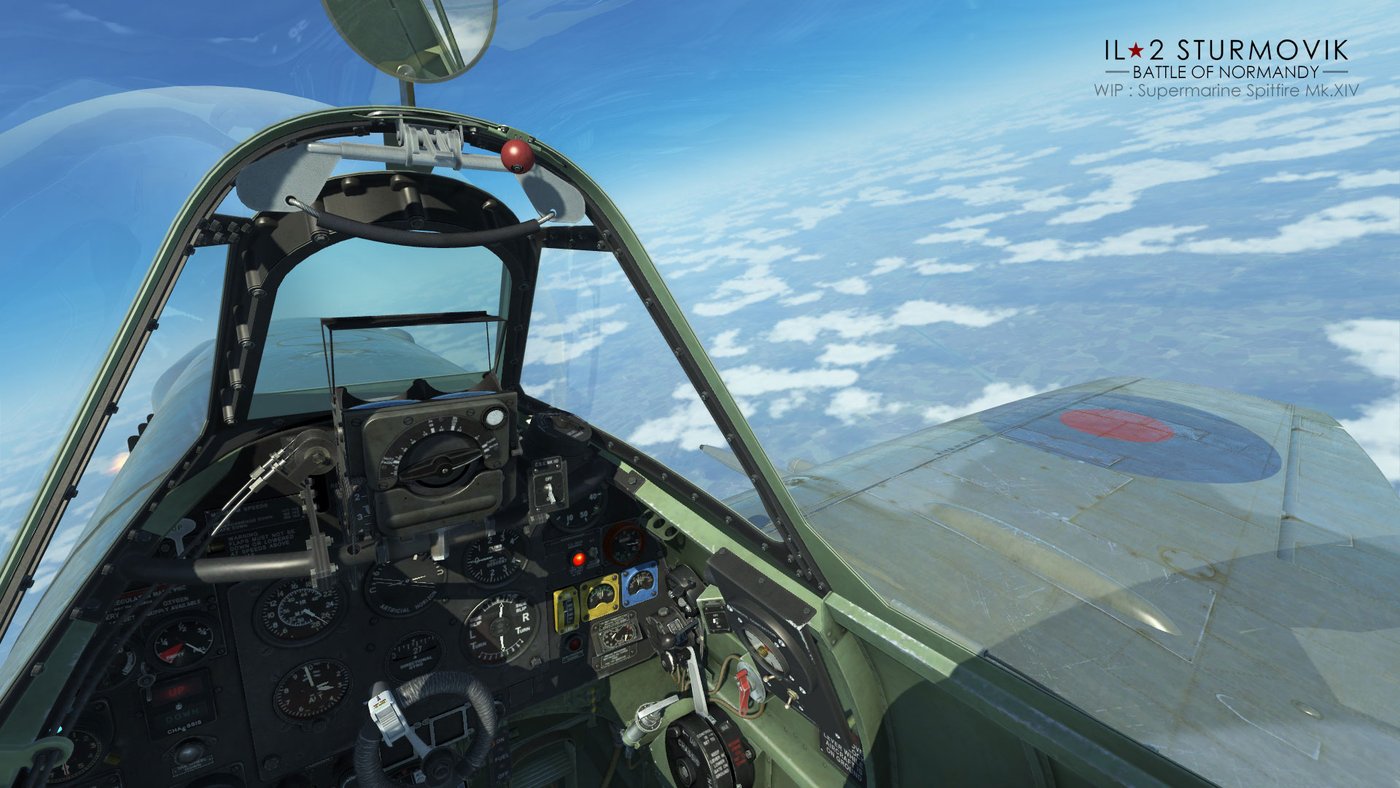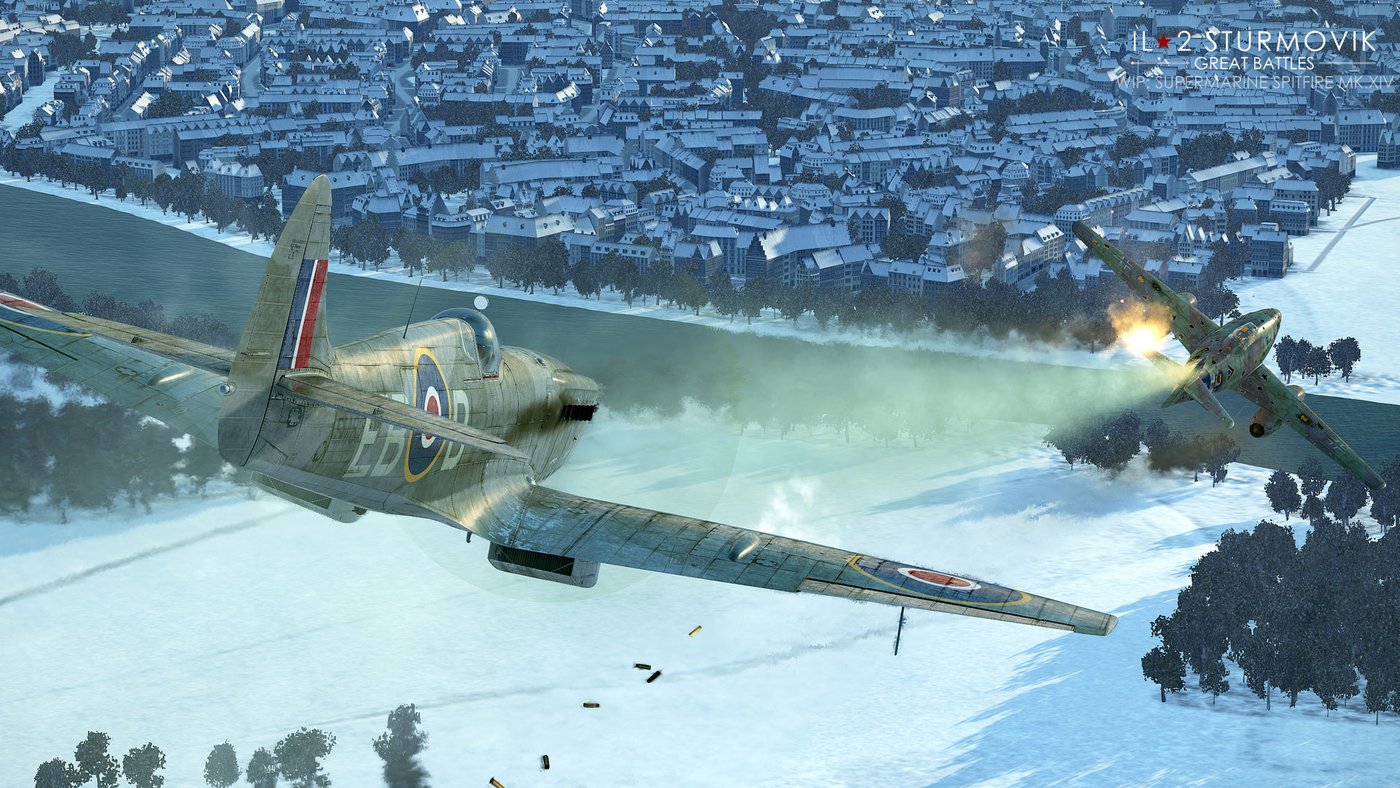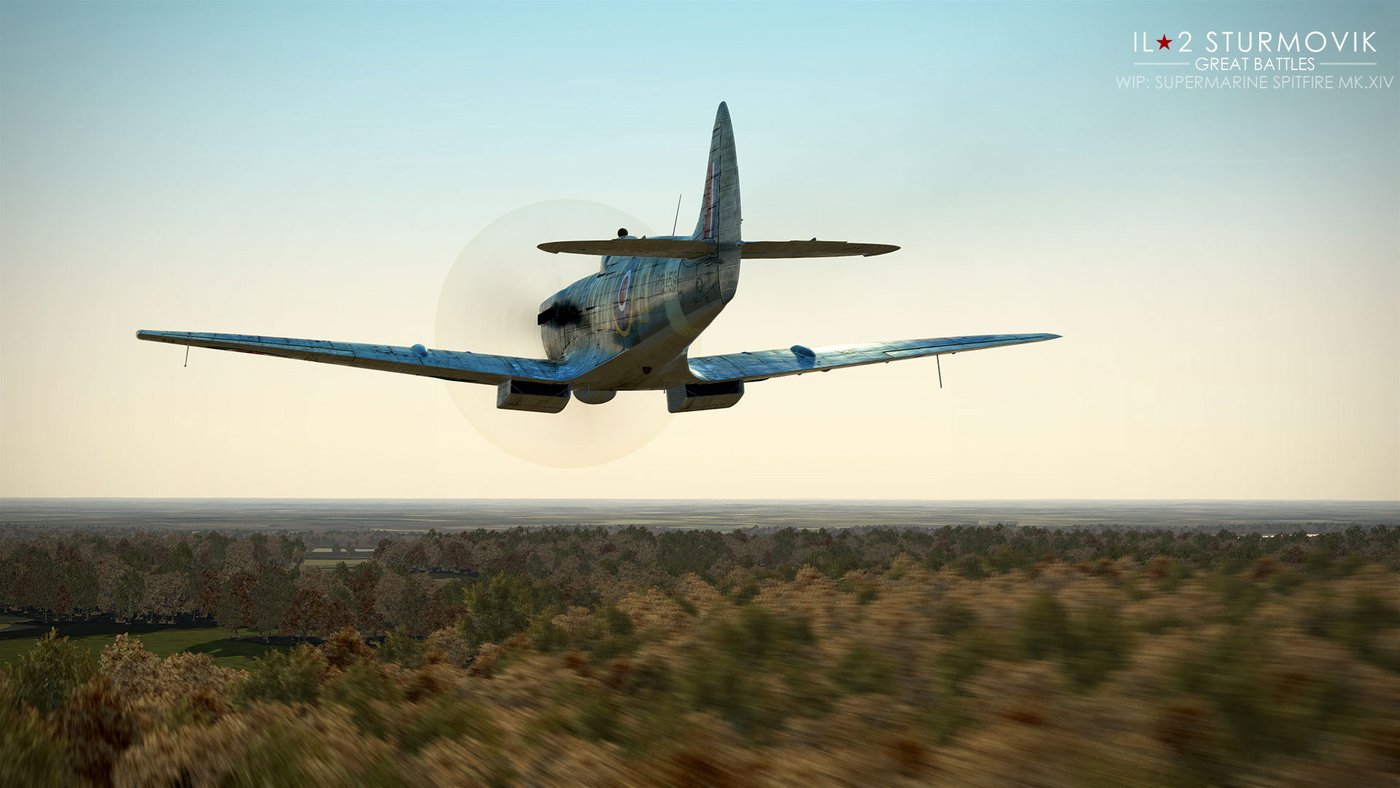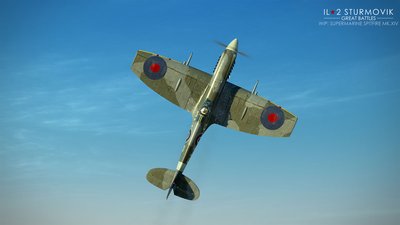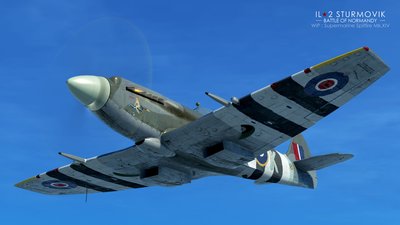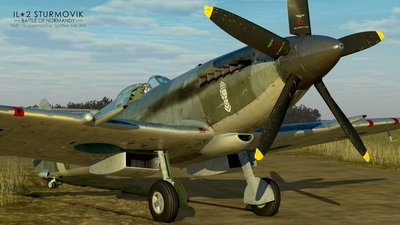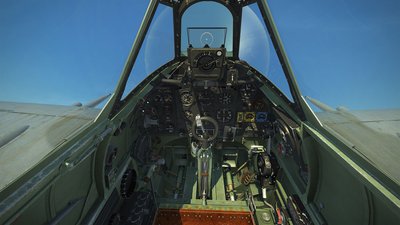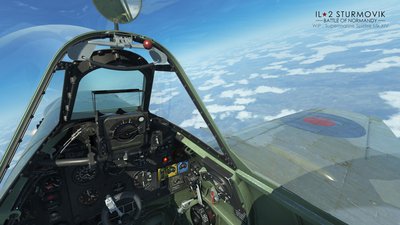The Spitfire Mk. XIV was the first of the Griffon-powered Spitfires to be powered by the Griffon 65 inline engine, which was fitted with a two-stage supercharger to overcome the poor high-altitude performance of the earlier, single-stage Griffon engines. At maximum power, this new engine model could produce 2,050 horsepower. In addition to the new engine, a new five-bladed Rotol propeller was also fitted to the plane.
The initial armament of the Mk. XIV consisted of 0.303 Browning light machine guns and 20 mm Hispano Mk. II cannons fitted in the wings. Later, during the summer of 1944, the 0.303s were replaced with a pair of Browning M2 0.50 caliber heavy machine guns. To gain extra performance while chasing V-1 flying bombs in the summer of 1944, some squadrons removed the machine guns and faired over the firing ports. A lead-computing gyroscopic gunsight could also be fitted.
The Spitfire Mk. XIV could be fitted with bomb racks to carry 250 lb. and 500 lb. bombs, although operationally this was limited to one squadron from February 1945. To improve turning performance, Mk. XIVs began being fitted with clipped wingtips in the winter of 1944-45.
Production of the Spitfire Mk. XIV began in late 1943, and the first handful of planes was issued to No. 610 Squadron at the end of December 1943. Besides hunting for V-1s, this model of the Spitfire eventually became the 2nd Tactical Air Force’s main high-altitude air superiority fighter over northwestern Europe. Mk. XIVs began to be sent to southeastern Asia in June 1945, but these saw no usage against the Japanese.All told, 957 Mk. XIV Spitfires were built. After the end of World War II, the plane was exported to a number of foreign countries, including Belgium, India, and Thailand.
